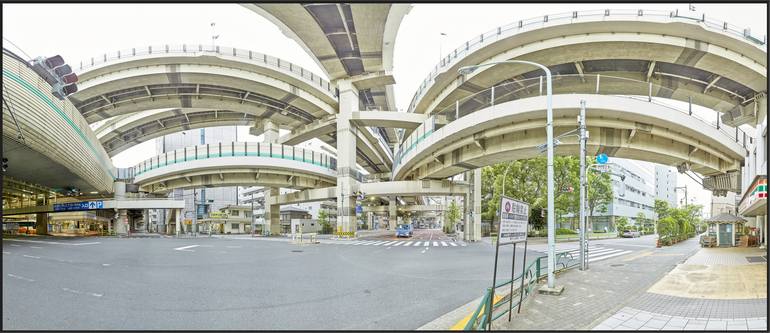






VIEW IN MY ROOM
'The Family Takahashi' / Tokyo, Japan Photograph
Germany
Photography, Paper on Paper
Size: 118.1 W x 51.2 H x 0 D in
Ships in a Tube
Shipping included
14-day satisfaction guarantee
Artist Recognition

Artist featured in a collection
About The Artwork
間 ma, the space in between. Michael Barth unites the basic principles of Japanese aesthetics of balance and harmony. Following the 'utskushii mono, 'The Creation of the Beautiful', coherent, traditional conceptions are made clear here. Japanese aesthetics characterizes the 'non-conflict with nature'. The cultivated human being is like the wind, with free self, without attachment able to overcome the substantial ego, which is recognized by Buddhism as an illusion. The free self is described as 'empty' or as Buddha nature. The invisible space corresponds to this emptiness, defines the material level and is considered to be the connection to the spiritual world. ________________________________________ There used to be few bridges in Japan, most of the rivers were crossed by boat. If there was a bridge near the place of residence, this was an important feature, which was then often included in the surname. Takahashi means someone who lives near a bridge. I was interested in the small, traditional house in the middle of the picture. In my mind it was the first building in the area. During the two days I stayed there, due to language barriers, I was unable to contact the residents, an friendly looking, older couple. So I gave them the name Takahashi, who live near the bridge. In architecture, 間 ma is the space between material boundaries such as walls, columns or frames. In this void lies the actual space. This invisible space is a feeling that can be concentrated and experienced by the senses. In sumi-e painting with ink, the Japanese masters have defined or left the space between figurative elements as empty space. Only through these voids do space, perspective and the resulting temporal distance come about. Anyone who practices calligraphy quickly realizes that it is not just about mastering the form of the characters, but also about the relationship of the form to the surrounding non-form. This balance of form and space is always taken into account in the final artistic judgment. ________________________________________ full resolution photograph Edition of 10 other sizes on request
Details & Dimensions
Photography:Paper on Paper
Original:One-of-a-kind Artwork
Size:118.1 W x 51.2 H x 0 D in
Frame:Not Framed
Ready to Hang:Not applicable
Packaging:Ships Rolled in a Tube
Shipping & Returns
Delivery Time:Typically 5-7 business days for domestic shipments, 10-14 business days for international shipments.
Handling:Ships rolled in a tube. Artists are responsible for packaging and adhering to Saatchi Art’s packaging guidelines.
Ships From:Germany.
Customs:Shipments from Germany may experience delays due to country's regulations for exporting valuable artworks.
Have additional questions?
Please visit our help section or contact us.
Germany
Michael Barth was born in Nuremberg in 1964. His father, a well-known journalist from the 1960s and 1970s, introduced him to photography at an early age. After his apprenticeship in Munich, numerous assistances followed in the areas of fashion, people and stilllife photography. Extensive trips to North and Central America followed; there he supported projects of indigenous peoples politically and photographically, worked closely with tribal councils on environmental protection. To realize his projects, he worked in Munich as a studio photographer and commercial film maker for the industry. He devoted himself to Art-Photography his entire life. For almost two decades he and his wife organize exhibitions in pop-up galleries and temporary exhibition areas selling his pictures directly to collectors and art lovers. www.galerie29.com
Artist Recognition

Artist featured by Saatchi Art in a collection
Thousands Of Five-Star Reviews
We deliver world-class customer service to all of our art buyers.
Global Selection
Explore an unparalleled artwork selection by artists from around the world.
Satisfaction Guaranteed
Our 14-day satisfaction guarantee allows you to buy with confidence.
Support An Artist With Every Purchase
We pay our artists more on every sale than other galleries.
Need More Help?